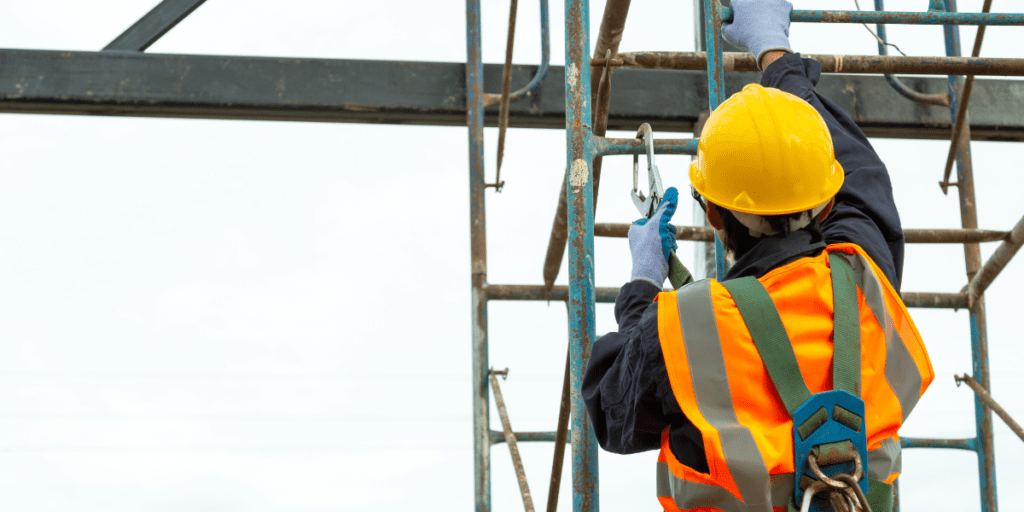The Riskiest Jobs in the UK

Recent in-depth analysis of UK workplace hazards has revealed that some professions are far more dangerous than others. By understanding the most high-risk trades, business owners and workers can take steps to improve safety protocols and access appropriate public liability insurance protections.
Here at Tradesman Saver, we specialise in providing suitable covers for tradespeople in even the most dangerous professions. This report outlines updated statistics concerning the riskiest sectors, common accident causes, geographical variations and demographic trends.
Construction Remains the Most Hazardous Industry
The construction industry continues to record the highest number of workplace fatalities, accounting for 31% of all worker deaths in the UK. This includes incidents on-site along with worker suicides.[1]
Specifically, over 270 construction workers took their own lives in 2020 alone according to data from the Office for National Statistics. The combination of physically-taxing work, isolation and financial instability contributes to this disturbing trend.[2] [3]
In terms of on-site dangers, builders operate heavy machinery, work at height and handle substantial loads daily – all of which can easily turn deadly with a single misstep. Additional hazardous trades within the high-risk construction sector include:
ElectriciansRoofersScaffoldersDemolition workersSteel erectors
Surprisingly, even painters and decorators record elevated accident rates primarily due to the prevalence of falling from ladders and scaffolds while working.
Builders Face the Highest Fatality Rates
Although the construction sector as a whole claims the most workplace casualties annually, builders specifically are most at risk. Tradesmen in these roles account for 13% of all annual workplace deaths registered across the entire UK economy.
Builders work on unstable scaffolds and roofs regularly, often hundreds of feet in the air with minimal safety barriers. Falling from height is understandably the leading cause of builder fatalities as a result.
Roofers face comparable dangers to builders in terms of falls. But they also contend with additional hazards like severe weather, slippery surfaces and heavy loads. Together with builders, roofers make up over 20% of all workplace deaths annually.
Common Causes of Workplace Fatalities
After extensively assessing data from hundreds of workplace deaths over a five year period, the highest risk factors are:
Falling from height – Responsible for 1 in 4 fatalitiesStruck by moving object – Claims over 15% of livesRun over or struck by vehicle – Accounts for 13%+ deaths
Other noticeable causes include getting trapped by something collapsing or toppling (7%) and coming into contact with electricity (5%). Multiple deaths also stem from explosions and fires annually.
Understanding these trends allows tradesmen to identify areas to improve safety governance and protocols on jobsites. It also assists employers in recognising higher risk roles most in need of advanced protections.
Regional Differences in Fatality Rates
Geographical location also significantly impacts workplace risk levels across the UK. Specifically looking at fatality rates:
Devon – Highest rate of deaths, influenced by extensive agricultural jobs.Greater London – Second highest rate due to concentrated construction activity.North East – Records the lowest rate of workplace accident deaths.
So while London as the heart of UK business experiences elevated workplace hazards, the highest chances of accidents specifically occur in Devon. This is affected both by the high number of builders operating across Devon and the abundance of treacherous agricultural roles.
Understanding these geographical risk factors allows employers and individuals to take additional precautions if working in recognised high-risk counties. For workers relocating jobs, this also provides valuable awareness before committing to roles.
Pay Often Trails Risk Levels
Workers in the most dangerous industries consistently earn below the national average salary in the UK based on recent data. Builders, for example, make over £4,000 less than the median income annually. Similar below-average earnings are seen for:
Manufacturing facility workers
So while some advancement to senior positions in fields like construction may ultimately yield higher pay, most high-risk, entry-level roles fail to adequately compensate for the inherent dangers workers face.
Men and Middle-Age Workers at Peak Risk
Considering demographics, men account for over 95% of workplace deaths registered between 2017 and 2021. Possible reasons include men dominate higher risk sectors like construction and manufacturing. Biological factors may also contribute to men facing elevated risks performing strenuous labour intensive tasks.[4]
Analysing age data reveals workers between 36 and 55 years old suffering the highest chances of workplace fatalities. Younger millennials and older generations over 65 benefit from reduced accident rates. Business owners should thus emphasise safety training for middle aged workers who data shows are most vulnerable currently.[5]
For High-Risk Public Liability Insurance, Choose Tradesman Saver
Here at Tradesman Saver, we specialise in providing bespoke cover for builders, roofers, electricians and all high-risk trades operating in the most hazardous sectors like construction and manufacturing. Our public liability and specialist builders insurance policies ensure you’re financially protected even in the worst-case scenario.
If you work in a recognised high-risk industry anywhere in the UK, contact our team on 0800 121 8748 to discuss protections reflecting your actual occupational hazards. Our adaptable policies and payment plans aim to provide comprehensive cover that suits your budget and requirements.
About the Data:
[1] Data concerning workplace deaths by industry, cause of fatality, and demographic distributions was obtained from the Health and Safety Executive (HSE) records for the years 2017-2022. The HSE serves as the official government body monitoring workplace injuries and accidents.
[2] Suicide statistics among UK construction workers specifically was collected from Office for National Statistics (ONS) documentation of occupation mortality rates in 2020.
[3] Construction industry suicide rates, economic factors, and on-site dangers was supported using 2020 construction data published by the ONS under its Construction Statistics portal.
[4] The determination of annual salary by career field was conducted by reviewing occupation wage distributions in the 2021 Annual Survey of Hours and Earnings from the ONS. This provided median national salaries benchmarking dangerous roles against national averages.
[5] Glassdoor occupation data concerning career progression and senior role salaries provided supplementary information on potential wage growth in high-risk industries.






